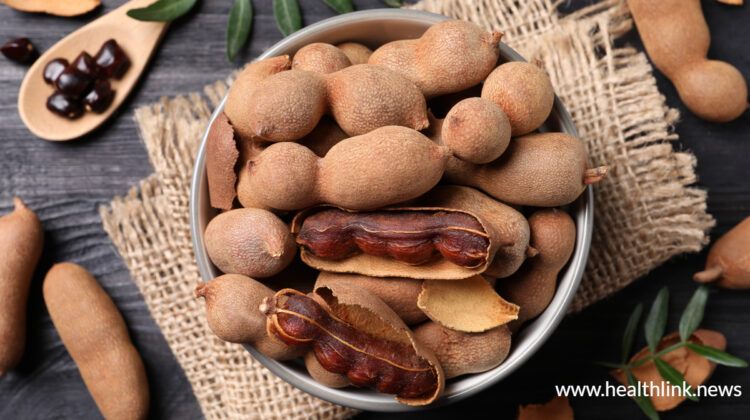Tamarind: A Sweet and Sour Flavors Fruit with Health Benefits

Tamarind is a partially dried fruit that comes from a tropical tree (Tamarindusindicus). The tamarind tree is native to Africa, southern Asia, and northern Australia. In India, this tree is grown all over the country. The tamarind fruit has been used for thousands of years both as a food source and for medicinal purposes.
Tamarind is a tree. Its partially dried fruit is used to make medicine. Tamarind might be used for the treatment of dry eyes by decreasing the amount of fluid in your body and increasing the salt level in your blood, which helps to decrease swelling in the eye. It is also used for constipation, fever, gallbladder disorders, disorders affecting bile flow in the liver, and many other conditions. This article talks about tamarind uses, side effects, and its natural sources.
How Does Tamarind Work?
Tamarind contains active ingredients, including aucubin, phenolics, quercitrin, and gallic acid. These compounds all have antioxidant activity. Antioxidants help protect cells from the damage associated with exposure to oxygen-free radicals. Some aucubin may also be converted into a chemical similar to mucin found in the eye. Mucin helps provide protection and wetness for the eye surface.
According to the Memorial Sloan Kettering Cancer Centre, Tamarind’s properties as a laxative might work to relax your intestines and relieve constipation. This natural remedy also might have some activity against bacteria and fungi. The Memorial Sloan Kettering Cancer Center also notes that tamarind might help treat dry eye syndrome by mimicking the main component of tears, called mucin.
Tamarind is effective in case of:
- Tamarind is an ingredient in some eyedrops that can be used to treat dry eyes. The best types of drops contain about 1% tamarind seed extract and another ingredient (hyaluronic acid) called Visine Intensive (1% EDO), and XylocaineMonodose.
- Tamarind, a tree native to Africa and India, is famous for similar medicinal uses as well as culinary. The tamarind fruit has been used in traditional medicine in Africa, Arabia and India as a cooling remedy. Contains tannin, starch, sugar and several acids — citric acid, malic acid,and tartaric acid — it is also used to mask unpleasant tastes in medicines.
Tamarind is rich in vitamin C and has high antioxidant activity. Tamarind is used in the treatment of colds, fever, diarrhea, constipation, menstrual disorders, knee pain, intestinal worms, and pregnancy-related nausea. Tamarind also helps in liver and gallbladder problems.
High in Nutrition
Tamarind is high in many nutrients. A single cup (120 grams) of the pulp contains-
- Iron: 19% of the DV
- Calcium: 7% of the DV
- Copper: 11% of the DV
- Potassium: 16% of the DV
- Phosphorus: 11% of the DV
- Vitamin B3 (niacin): 15% of the DV
- Vitamin B1 (thiamine): 43% of the DV
- Vitamin B2 (riboflavin): 14% of the DV
- Magnesium: 26% of the daily value (DV)
Tamarind has trace amounts of:
- Folate
- Vitamin c
- Vitamin k
- Selenium
- Vitamin b6 (pyridoxine)
- Vitamin b5 (pantothenic acid)
Tamarind is a sweet and sour pulp taken from the fruit of tamarind trees. It is high in nutrients such as calcium and magnesium, as well as providing 6 grams of fiber, 3 grams of protein, less than 1 gram of fat, and only 287 calories in each cup.
The world is filled with natural ingredients — some familiar, and others not so much. From persimmons to passion fruit, turmeric to tamarind, knowing the difference between natural and added sugars is the first step toward choosing a nutritious snack or ingredient. Tamarind pulp, which is made from the fruit of the tamarind tree, is a natural sweetener and flavor enhancer. It can be consumed in two forms: as whole fruit or as a concentrated paste, or concentrate, which contains the fruit’s flavor and sweetness. For example, tamarind pulp, which comes from the bean pod of the tamarind tree, can be used in sauces and marinades, or on its own as a healthy sweet treat. Just check that your favorite soft drink and many other canned foods do not contain any added sugars, but rather rely on natural ingredients to provide flavor, such as tamarind pulp.
Tamarind provides a low-glycemic sweetener that is made from the pulp around the seed of the tamarind fruit. The seeds are removed, and the pulp is pressed into blocks and dried. This process makes it easy to add a flavourful, sweet boost to any foods you like. Tamarind does not contribute calories or carbohydrates to your food. It is about as sweet as brown sugar with an almost molasses-like flavor.
Tamarind with its different forms:
Tamarind is a very sweet and sour fruit, which makes it a unique flavor. You can buy tamarind in prepared forms, including candy, sweetened syrup, bottled juice, or dried pods.
Tamarinds come in a variety of forms, but they have often been used to flavor everything from drinks to desserts. Choose whether you want the sweet flesh, which tastes much like a pumpkin fruit, or the next form – the brine inside tamarind pods. It is also sold dried or packed in jars as a paste.
You can also find the pure fruit in three main forms:
- Raw pods- Raw tamarind fruit is usually sold dried, and the tough outer shells have to be removed with a sharp knife before using the pulp. Tamarind can also be found in a paste or syrup form.
- Pressed block- Like tamarind fruit, pressed block is comprised of pulp and has the same tangy flavour and clear, sweet-sour taste, but it is dry. It is convenient, perfect for use in cooking and baking.
- Concentrate- The tamarind is a tropical fruit that grows throughout the world and is one of the major ingredients found in Worcestershire sauce. The tamarind can be purchased as a concentrate, which can be diluted and made into a tasty drink or cocktail. You can also buy it already mixed with freshwater, which makes an excellent refreshing drink.
High in Magnesium
In addition to its good nutritional value and relatively high magnesium content, tamarind is an excellent source of several nutrients. One ounce (30 grams), or a little less than 1/4 cup of pulp, delivers 5% of the DV for iron and 10% of the DV for vitamin C.
Tamarind has antibacterial effects
Tamarind extract is made from the natural compounds found in this tropical fruit that have antimicrobial effects, as seen in lab and animal studies. Lab studies suggest that lupeol, a compound found in tamarind extract and other plants, has antibacterial properties.
Tamarind candy may lead to unsafe levels of lead
People who regularly consume candy are more likely to develop cavities, a common digestive problem that is painful and potentially expensive to treat. Obese people have a higher risk of developing type 2 diabetes, high blood pressure, and heart disease. Compared to other types of candy, it has fewer calories and less sugar but is still candy — making it the least nutritious form of tamarind.
Boost your heart health with antioxidants properties
Tamarind fruit may help regulate cholesterol and reduce heart disease risk in two ways. First, tamarind fruit may help lower total cholesterol and LDL (bad) cholesterol as well as triglycerides. Second, one animal study suggested that tamarind antioxidants may reduce damage to LDL cholesterol, which is a key driver of heart disease.
Beneficial for Dry eyes
Tamarind seed extract contains a mixture of sugars that can be useful for the treatment of dry eyes. Dry eye syndrome is a common condition affecting the tear film (a combination of secretions from the lacrimal glands, meibomian glands, and mucous membrane of the conjunctiva) that makes up the outermost, protective layer of tears.
Special Precautions and Warnings
Diabetic Patient: You should not take tamarind if you have diabetes and take medications to control your blood sugar. Test your blood sugar levels carefully while taking tamarind and make adjustments to your medication schedule if necessary.
Surgical: Tamarind is the edible, pod-like fruit of tamarind trees. It is used to add a sour or sweet flavor to foods, drinks, and medicines. Tamarind is available in dried, frozen, and concentrated forms. This natural substance might lower blood sugar levels and interfere with blood sugar control during surgery. Therefore, stop taking tamarind at least 2 weeks before a scheduled surgery.
Pregnant woman and breast feeder: Tamarind is a tropical tree with sweet-sour fruit. The juicy pulp is sour and sold as a juice or candy. Tamarind extract is popular in herbal medicine, and there is not enough reliable information to know if tamarind causes any side effects or problems when used by children, the elderly, or pregnant or breastfeeding women.
